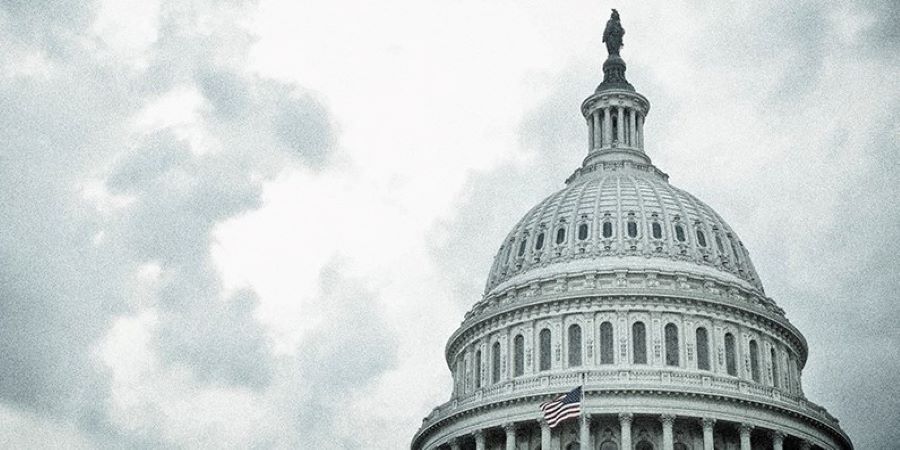by Kristina Hooper, Global Market Strategist, Invesco Ltd., Invesco Canada
For months, I have talked about the importance of policy in combatting the COVID 19 crisis: health policy, monetary policy, and fiscal policy. All three prongs need to be adequate and effective in order for the US economy to recovery quickly. While the Federal Reserve has bent over backwards to provide accommodation to support the US economy and markets, fiscal stimulus is still a work in progress.
In this week’s commentary I talk with Andy Blocker, Invesco’s Head of US Government Affairs, who breaks down where we are today in terms of fiscal policy – and what to expect next.
Q: How does the level of federal actions compare today versus the global financial crisis?
Andy Blocker: March and April have been truly extraordinary in terms of the speed and weight of the federal government’s intervention into the economy. Much of the playbook being utilized by the Treasury Department, Federal Reserve, and other financial regulators comes straight out of the response to the financial crisis of 2007/2008. What is unprecedented, however, is the velocity with which these same actions are being taken during the current crisis.
In March 2020, there were 18 federal actions taken to stem the economic effects of the COVID 19, and in April there have been seven.1 To compare, in Months 1 and 2 of the global financial crisis, there were two and zero federal actions taken, respectively. The busiest month of that crisis was Month 11, with 10 federal actions taken. 1
These actions include several emergency actions by the Federal Reserve, as well as four phases of response from Congress:
- Phase 1: US$8.3 billion
- Domestic public health agencies
- United States Agency for International Development (USAID) global response
- Expanded Medicare telehealth
- Phase 2: US$192 billion
- Paid leave for workers, tax credits for employers
- Unemployment benefits, SNAP, Medicaid
- Phase 3: US$2.2 trillion CARES Act
- Liquidity for businesses
- Stimulus for individuals
- Unemployment and tax benefits
- Hospitals and health care system
- Federal agencies and state and local governments
- Phase 3.5: US$484 billion
- Additional funding for small business liquidity, hospitals, testing
Q: Looking at the actions that have been implemented so far, there have been some hiccups along the way – including a backlash against larger businesses receiving loans earmarked for smaller businesses. Has there been progress resolving some of these issues?
A: The Paycheck Protection Program, which was instituted with US$349 billion under the CARES Act (and subsequently replenished with an additional US$310 billion), was intended to help smaller businesses meet payroll during this crisis. However, it has run into controversy as some larger companies received funds from the program. (Big hotel and restaurant businesses were permitted to apply through multiple subsidiaries as long as each location employed 500 or fewer people.)
Some of those recipients returned the money in response. And then on April 23, the Treasury Department updated its guidance for the program to require borrowers to take into account their ability to access other sources of liquidity – this essentially leaves large public companies out of the running for these funds, since they have access to capital markets.
Q: Let’s examine the most recent federal action – the US$484 billion stimulus bill passed on Thursday by Congress and signed by President Donald Trump. Is this the package you were expecting?
A: The need for this package became apparent after the Paycheck Protection Program (PPP) quickly ran out of funds. Republicans originally wanted to inject an additional US$250 billion into this program, but as negotiations continued, other measures were included. The bill that was approved by Congress includes US$310 billion in PPP funds, US$75 billion for hospitals and health care providers, US$60 billion for the Small Business Administration’s Economic Injury Disaster Loan program, and US$25 billion for coronavirus testing.
The most telling part of this package is what’s missing – funding for states and localities. This was a major priority from Congressional Democrats as cities and states face impending budget crises given the loss of tax revenue for those reliant on sales taxes. Republicans resisted more funding for states and localities, fearing that the funds would go towards supporting fiscal irresponsibility and underfunded pension programs. This issue will be revisited in the next round of funding but expect the rhetoric around the issue to continue to escalate.
Q: What steps are you anticipating next from the federal government? What are the biggest issues that Republicans and Democrats will be debating as talks accelerate about the next phase of stimulus?
A: Despite Congress coming fresh off passing the Phase 3.5 fiscal stimulus, there is already talk in Washington of Phase 4. The House and Senate are scheduled to return to Washington on May 4, and negotiations are expected to begin immediately.
But while previous negotiations saw a good deal of cooperation among party leaders in order to quickly provide aid to an ailing economy, it’s expected that politicians this time around may advocate more strongly for particular issues. Issues raised by Democrats have included funding for state, local, and tribal governments, funding for food aid programs, regulations on worker safety, funds for mail in voting in advance of the November election, aid for the ailing US Postal Service, and additional direct payments to Americans. Issues raised by Republicans have included more aid for small businesses and increased infrastructure spending, but there have also been concerns raised about the deficit level from the trillions that have already been spent.
Q: What about the states? With a patchwork quilt of state economies seeking to open on different timelines, governors have had a prominent place in the headlines. What are you watching at the state level?
A: Currently, all 50 governors are seeking health care dollars and supplies (ventilators and personal protective equipment) to help their much stressed hospital systems, as well as state stabilization funds to assist their efforts to respond to the crisis where local services will be in higher demand. But that’s where the similarity ends.
COVID 19 is different in many ways than other disasters faced by governors because of the silent nature of the attack, not to mention its length in duration, national spread, and broad based gut punch to all facets of the economy. Governors have never been challenged in this manner, and many are faced with picking the appropriate health care response – lockdown, stay at home or social distance – while maintaining their economy.
All eyes will certainly be on Georgia this week as Governor Brian Kemp oversees the most ambitious state re opening plan to date. As of April 24, businesses including hair salons, barbershops, tattoo parlors, massage therapists, nail salons, bowling alleys, and gyms are allowed to open as long as they follow state guidelines for social distancing and sanitation. Starting today (April 27), dine in restaurants, private social clubs, and theaters are allowed to open.
With 11 gubernatorial races in 2020, those governors that are seeking reelection may win or lose their race depending on how they manage this crisis. So it’s also interesting to watch how constituents view their leadership. New research by Pew Research Center’s Election News Pathways project is examining how Americans’ news habits and attitudes relate to what they hear, perceive, and believe. Of note is how news sources influence attitudes of local government response to COVID 19. For example, 81% of US adults who use national news sources (CBS or NBC) for election news reported that they are at least somewhat confident that their state and local elected officials are doing a good job responding to the coronavirus outbreak. However, those who rely on social media sites for election news aren’t quite as confident. Pew found that 60% of US adults who turn to social media are confident of their state and local elected officials’ response – a 21% drop compared to those who watch national news.
As Americans remain confined to their homes for the foreseeable future, looking at how outlets message the highs and lows of the government response to coronavirus could have a significant impact on voter attitudes toward both national and local officials come November.
This post was first published at the official blog of Invesco Canada.















